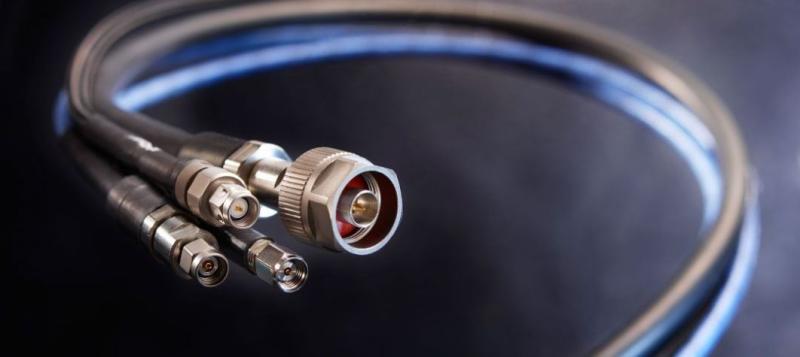California, often known as the heart of technological innovation, has once again brought forth a marvel that promises to revolutionize various industries. The Co-Axial Blade Probe, a cutting-edge technology, is making waves in the Golden State and beyond. We will delve into what the Co-Axial Blade Probe is, how it works, its applications across different sectors, and the implications it carries for the future of technology and science.
Understanding The Co-Axial Blade Probe:
- The Core Concept
To grasp the significance of the Co-Axial Blade Probes, we must first understand the core concept that drives it. At its essence, this technology combines the power of co-axial cables and blade probes, creating a versatile tool for precision measurements and analysis. Let’s break down this fusion of two essential elements.
- Co-Axial Cables
Co-axial cables are a fundamental component in modern electronics, providing a means for transmitting signals with minimal interference. The structure of a co-axial cable consists of an inner conductor, dielectric material, a conductive shield, and an outer insulating layer. This design ensures that the electrical signal travels efficiently and is well-protected against external electromagnetic interference.
- Blade Probes
Blade probes, on the other hand, are used in metrology and quality control. These probes are designed to make precise and non-destructive measurements. They are commonly used in industries like aerospace, automotive, and electronics to ensure that the products meet the required standards.
- The Fusion
The Co-Axial Blade Probe takes the reliable transmission capabilities of co-axial cables and combines them with the precision measurement qualities of blade probes. This amalgamation allows for the direct transmission of measurement data, enhancing the overall efficiency and accuracy of the process.
How Does The Co-Axial Blade Probe Work?
The Mechanics
The Co-Axial Blade Probe is a sophisticated piece of technology that operates through a series of intricate steps. Here’s a simplified breakdown of its mechanics:
- Contact with the Surface
The blade probe component of the Co-Axial Blade Probe makes direct contact with the surface under inspection. This can be a material sample, a manufactured component, or even biological tissue.
- Measurement Process
Once in contact with the surface, the blade probe measures various parameters, depending on the application. These parameters could include dimensions, electrical properties, material composition, and more. The data is then converted into electrical signals.
- Transmission
The unique feature of the Co-Axial Blade Probe comes into play during the transmission of data. Unlike traditional blade probes, the Co-Axial Blade Probe uses co-axial cables to transmit the signals. This co-axial setup ensures minimal signal loss and interference during transmission.
- Data Analysis
The transmitted data is received by a specialized receiver or data analysis system. This system interprets the signals, processes the measurements, and provides detailed insights into the characteristics of the surface being probed.
Advantages of The Co-Axial Blade Probe:
The Co-Axial Blade Probe offers several advantages that set it apart from conventional measurement methods:
High Precision: The fusion of co-axial cables and blade probes enables exceptionally precise measurements, making it ideal for industries where accuracy is paramount.
Minimal Interference: The co-axial design minimizes electromagnetic interference, ensuring that the collected data is reliable and accurate.
Versatility: This technology can be applied across various fields, from manufacturing to medical diagnostics, expanding its potential applications.
Applications of The Co-Axial Blade Probe:
The Co-Axial Blade Probe is not limited to a single industry. Its versatility and precision make it a valuable tool in a wide range of applications. Here are some notable sectors where this technology is making a significant impact:
- Aerospace and Automotive
In the aerospace and automotive industries, precision and safety are of utmost importance. The Co-Axial Blade Probe is used for quality control and testing of critical components such as engine parts, airframe components, and materials used in the construction of vehicles and aircraft.
- Electronics and Semiconductors
In the fast-paced world of electronics and semiconductors, even the slightest defect can lead to major issues. The Co-Axial Blade Probe assists in ensuring the quality and reliability of microelectronic components, semiconductor materials, and circuit boards.
- Medical and Biotechnology
Medical diagnostics and biotechnology research require non-destructive and precise measurements. The Co-Axial Blade Probe aids in analyzing biological tissues, conducting experiments, and verifying the quality of medical devices.
- Material Science
Researchers and scientists in the field of material science benefit from the capabilities of the Co-Axial Blade Probe in characterizing materials, studying their properties, and advancing the development of new materials for various applications.
- Environmental Monitoring
In the context of environmental monitoring, the Co-Axial Blade Probe is used to measure and analyze samples from the environment, helping to track pollution levels, water quality, and soil composition.
The Future of Co-Axial Blade Probe Technology:
As the Co-Axial Blade Probe gains traction in various industries, it’s only natural to ponder its future. The potential for further innovation and development in this field is vast. Here are some key areas where we can expect to see advancements:
- Enhanced Measurement Capabilities
Future iterations of the Co-Axial Blade Probe are likely to have even more advanced measurement capabilities. This may include the ability to measure a wider range of parameters with even greater precision.
- Automation and Integration
Integration with automated systems and robotics is a natural progression. This will make the technology even more accessible and practical for industries looking to streamline their quality control and testing processes.
- Miniaturization
Advancements in miniaturization will lead to more compact Co-Axial Blade Probes, making them suitable for applications where space is limited or where portability is a concern.
Challenges and Ethical Considerations:
While the Co-Axial Blade Probe offers immense potential, it also raises certain challenges and ethical considerations:
- Privacy Concerns
In fields like medical diagnostics, where the Co-Axial Blade Probe is used to analyze biological tissues, there are privacy concerns related to the collection and storage of sensitive patient data.
- Safety and Regulations
The technology’s application in critical industries like aerospace and automotive underscores the importance of strict safety regulations and standards.
- Environmental Impact
Manufacturing and disposing of Co-Axial Blade Probes should be done with consideration for the environment. Minimizing the environmental footprint is a growing concern in modern technology development.
Conclusion:
The Co-Axial Blade Probe, a California-born technological marvel, is revolutionizing precision measurements and analysis across multiple industries. Its unique fusion of co-axial cables and blade probes ensures high precision, minimal interference, and versatility in various applications. As technology continues to evolve, we can anticipate even more advanced capabilities, enhanced automation, and ethical considerations that demand our attention.




